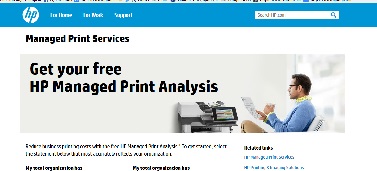My Appearance on WGST's "The Sully Show" 3/6/15 - Printer Tips
 Thursday, March 5, 2015 at 7:25PM
Thursday, March 5, 2015 at 7:25PM Rick and Sully look at printers and printing this week...
It’s relatively easy to take your printers for granted. Did you know that there is often a significant opportunity to reduce costs and make your workload by making simple changes to your home or office printing environment?
Have a listen:
Here are five ways your business can start reducing printing costs today:
1. See things from both sides
Saving on printing costs doesn’t mean you should stop printing altogether—it just means being strategic about hitting “print.” According to the Environmental Protection Agency, the average office worker in the U.S. prints 10,000 sheets of paper each year. By taking advantage of your printer’s duplex printing function, you instantly cut your paper usage. Coupled with other smart printing habits, the savings add up quickly. In other words, print on both sides.

2. Control the color
Color printing has its place, but it isn’t always necessary. Implementing color access control allows you to enable or disable the option to print in color by individual users or groups, as well as by specific applications like email. This can help prevent users from wasting more expensive color toner on jobs that should be printed in black and white. Print in Black and White when necessary.
3. Trim the fat
Poorly controlled print environments result in unnecessary print costs. Businesses of all sizes can realize tremendous cost savings by reducing the total number of devices they currently use and replacing them with higher-capacity, higher-speed devices. This includes helping to eliminate cost-inefficient or underutilized printers, and replacing collections of printers, scanners, copiers, and fax machines with more efficient multifunction devices. In addition, this can save time and money on the associated supplies. Consolidating the ink and toner supplies orders allows for even greater efficiencies.
4. Protect document confidentiality - especially at work
Only print what you need to print. Abandoned printouts—ones that people simply forget to pick up from the printer—can not only be wasteful, they also represent a potential security risk when confidential documents are left on the printer. A solution like HP JetAdvantage Private Print enables you to print via secure authentication—right at the device [2]. This new cloud-based printing feature can help reduce wasted and misplaced prints, keep information more secure, and store documents until you are ready to print them.
5. Look at your workflow
Maybe you can save paper. Giant office filing cabinets are quickly becoming relics. Of course they take up valuable office space, but as the files become crowded it also becomes increasingly difficult to locate documents when you need them. Document-capture solutions take electronic and paper-based documents, integrate them into front- or back-end business applications, automate workflows, and enable instant access to data stored in a secure and centrally managed repository.
HP printers can save you money, help save the environment and more.
Try the free online HP Managed Print Analysis for a custom evaluation of your printing environment. In less than five minutes you will have a customized report that pinpoints inefficiencies in your office printing and outlines actionable steps you can take to help reduce your costs and streamline your printing environment.
Get your free HP Managed Print Analysis
True business value
Servicing a mixed print environment can cost a business money and time. HP Managed Print Services (HP MPS) can help by evaluating your current environment and assessing future requirements. This information is used to tailor an imaging and printing infrastructure to your needs.

 HP,
HP,  The Sully Show,
The Sully Show,  printers tips,
printers tips,  tech segment in
tech segment in  HP,
HP,  The Sully Show,
The Sully Show,  WGST,
WGST,  radio,
radio,  tech segment
tech segment 